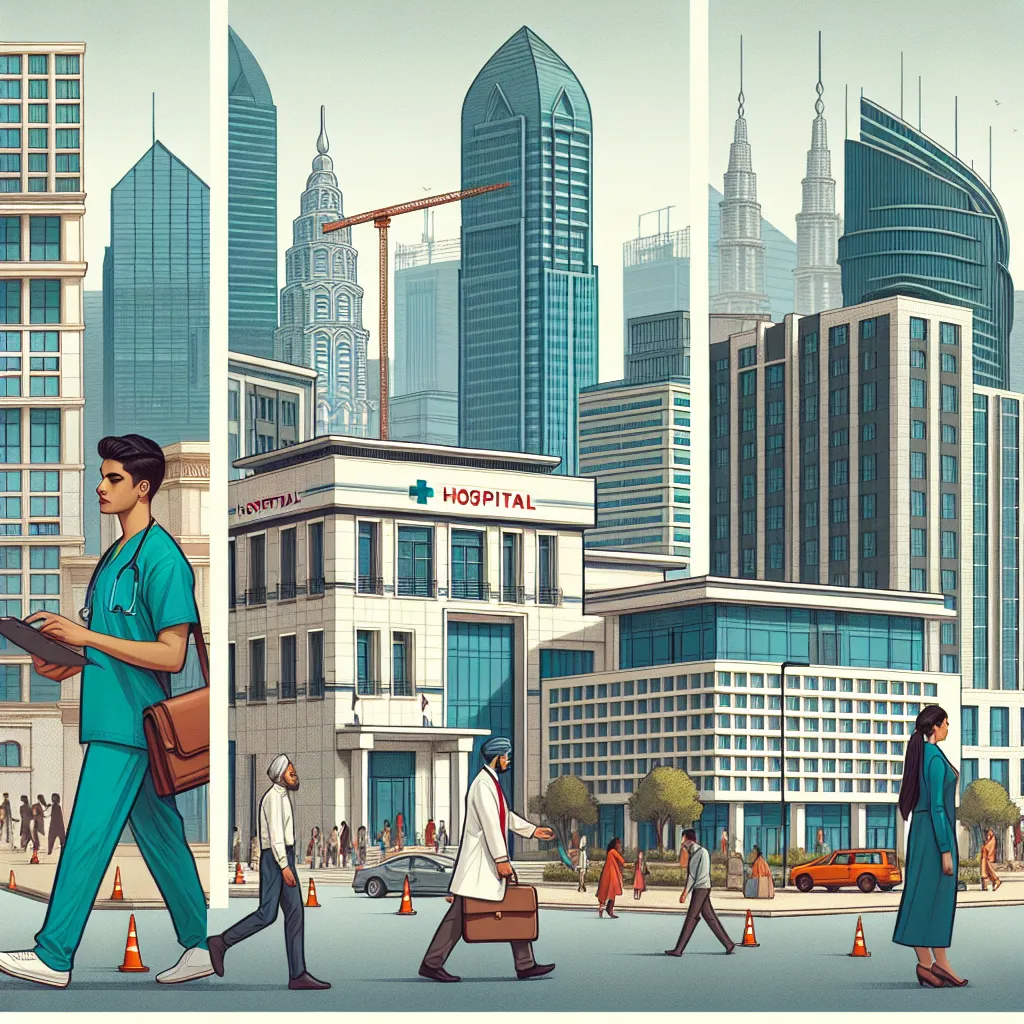Urbanization and its effects on social services is a crucial topic in IELTS Writing Task 2. This theme has appeared frequently in past exams and is likely to continue being a popular subject due to its relevance in today’s rapidly changing world. Let’s explore this topic in depth and provide you with sample essays to help you prepare for your IELTS exam.
Nội dung bài viết
Analyzing the Topic
The impact of urbanization on social services is a complex issue that touches on various aspects of urban development, population growth, and public infrastructure. It’s essential to understand the key components of this topic:
- Urbanization: The process of population shift from rural to urban areas
- Social services: Public services provided by the government, including healthcare, education, and welfare programs
- Infrastructure: The physical and organizational structures needed for the operation of a society
Given the frequency of this topic in IELTS exams, let’s examine a typical question you might encounter:
As cities continue to grow, the demand for social services such as healthcare and education increases. How can governments address this challenge? Discuss possible solutions and their potential effectiveness.
Analyzing the Question
This question requires you to:
- Understand the relationship between urban growth and increased demand for social services
- Identify possible solutions to address this challenge
- Evaluate the potential effectiveness of these solutions
- Structure your response in a clear and coherent manner
Now, let’s look at two sample essays that address this question at different band levels.
 Urbanization impact on social services
Urbanization impact on social services
Sample Essay for Band 8-9
Urban expansion is a global phenomenon that places significant pressure on social services, particularly healthcare and education. As populations in cities grow, governments face the daunting task of meeting the increased demand for these essential services. This essay will discuss potential solutions to this challenge and evaluate their effectiveness.
One promising approach is the implementation of smart city technologies. By leveraging data analytics and Internet of Things (IoT) devices, cities can optimize the allocation of resources and improve the efficiency of social services. For instance, predictive analytics can help healthcare systems anticipate disease outbreaks and allocate medical resources more effectively. Similarly, in education, digital learning platforms can expand access to quality education without the need for extensive physical infrastructure. This solution has the potential to be highly effective, as it allows for scalable and flexible service delivery.
Another solution is the development of satellite towns or planned communities on the outskirts of major cities. These new urban centers can be designed with adequate social infrastructure from the outset, alleviating pressure on existing city services. By distributing the population and services more evenly, governments can ensure better access to healthcare and education for all residents. This approach can be particularly effective in rapidly growing metropolitan areas, as it allows for controlled expansion and targeted investment in social services.
Public-private partnerships (PPPs) offer a third solution to address the increasing demand for social services. By collaborating with private sector entities, governments can leverage additional resources and expertise to expand and improve service delivery. For example, private healthcare providers could be incentivized to establish clinics in underserved areas, while educational institutions could partner with tech companies to develop innovative learning solutions. The effectiveness of PPPs depends on careful regulation and alignment of incentives, but when implemented successfully, they can significantly enhance the capacity and quality of social services.
In conclusion, the challenges posed by urbanization to social services require multifaceted solutions. The integration of smart technologies, development of planned communities, and formation of public-private partnerships all offer viable approaches to addressing the growing demand for healthcare and education in urban areas. While each solution has its merits, a combination of these strategies, tailored to the specific needs and resources of each city, is likely to be most effective in ensuring adequate social services for burgeoning urban populations.
(Word count: 378)
Sample Essay for Band 6-7
As cities get bigger, more people need healthcare and education. This is a big problem for governments. In this essay, I will talk about some ways to solve this problem and how well they might work.
One solution is to build more hospitals and schools. This can help because there will be more places for people to go when they need healthcare or education. For example, if a city builds a new hospital, more sick people can get help. This solution can work well, but it costs a lot of money and takes time to build new buildings.
Another idea is to use technology to help provide services. For healthcare, doctors can use video calls to talk to patients who live far away. In education, students can learn online from home. This solution is good because it doesn’t need new buildings and can reach many people quickly. However, not everyone has good internet or knows how to use technology, so this might not help everyone.
The government can also work with private companies to provide services. Private companies can open new clinics or schools, which can help more people get healthcare and education. This can be a good solution because it doesn’t use all the government’s money. But the government needs to make sure these private services are good quality and not too expensive for people.
In conclusion, there are different ways to solve the problem of increasing demand for social services in growing cities. Building more facilities, using technology, and working with private companies are all possible solutions. I think a mix of these ideas might work best, depending on what each city needs and can afford.
(Word count: 276)
Key Considerations When Writing
When addressing this topic in your IELTS Writing Task 2 essay, keep the following points in mind:
-
Structure: Ensure your essay has a clear introduction, body paragraphs, and conclusion. Use topic sentences to introduce each main idea.
-
Vocabulary: Use a range of vocabulary related to urbanization and social services. For higher band scores, incorporate more sophisticated terms and phrases.
-
Grammar: Demonstrate your ability to use a variety of grammatical structures. For band 8-9, use complex sentences and advanced grammatical forms accurately.
-
Coherence and Cohesion: Use linking words and phrases to connect your ideas smoothly. Ensure your essay flows logically from one point to the next.
-
Task Response: Address all parts of the question and provide relevant examples to support your arguments.
Key Vocabulary to Remember
Here are some important vocabulary words related to this topic:
- Urbanization (noun) /ˌɜːbənaɪˈzeɪʃn/: The process of making an area more urban
- Infrastructure (noun) /ˈɪnfrəstrʌktʃə(r)/: The basic physical and organizational structures needed for the operation of a society
- Social services (noun phrase) /ˈsəʊʃl ˈsɜːvɪsɪz/: Services provided by the government to improve the lives of its citizens
- Public-private partnership (noun phrase) /ˌpʌblɪk ˈpraɪvət ˈpɑːtnəʃɪp/: A cooperation between government and private sector companies
- Smart city (noun phrase) /smɑːt ˈsɪti/: An urban area that uses technology to provide services and solve city problems
- Resource allocation (noun phrase) /rɪˈsɔːs ˌæləˈkeɪʃn/: The distribution of resources where they are needed
- Demographic shift (noun phrase) /ˌdeməˈɡræfɪk ʃɪft/: Changes in the composition of a population
- Urban sprawl (noun phrase) /ˈɜːbən sprɔːl/: The expansion of urban areas into rural or undeveloped land
- Gentrification (noun) /ˌdʒentrɪfɪˈkeɪʃn/: The process of renovating and improving a neighborhood, often displacing original residents
- Sustainable development (noun phrase) /səˌsteɪnəbl dɪˈveləpmənt/: Development that meets current needs without compromising future generations
Conclusion
The impact of urbanization on social services is a critical issue that frequently appears in IELTS Writing Task 2. By understanding the key aspects of this topic and practicing with sample essays, you can improve your ability to address similar questions effectively. Remember to analyze the question carefully, structure your essay logically, and use a range of vocabulary and grammatical structures appropriate to your target band score.
For further practice, consider writing essays on related topics such as:
- The role of technology in improving urban social services
- Balancing urban development with environmental conservation
- Strategies for managing population growth in megacities
We encourage you to write your own essay on the question provided in this article and share it in the comments section below. This practice will help you refine your writing skills and prepare for success in your IELTS exam.
To further enhance your understanding of urbanization and its challenges, you may want to explore our article on how to address the challenges of urbanization. Additionally, for insights into how urbanization affects natural resources, check out our piece on how urbanization impacts natural resources.


